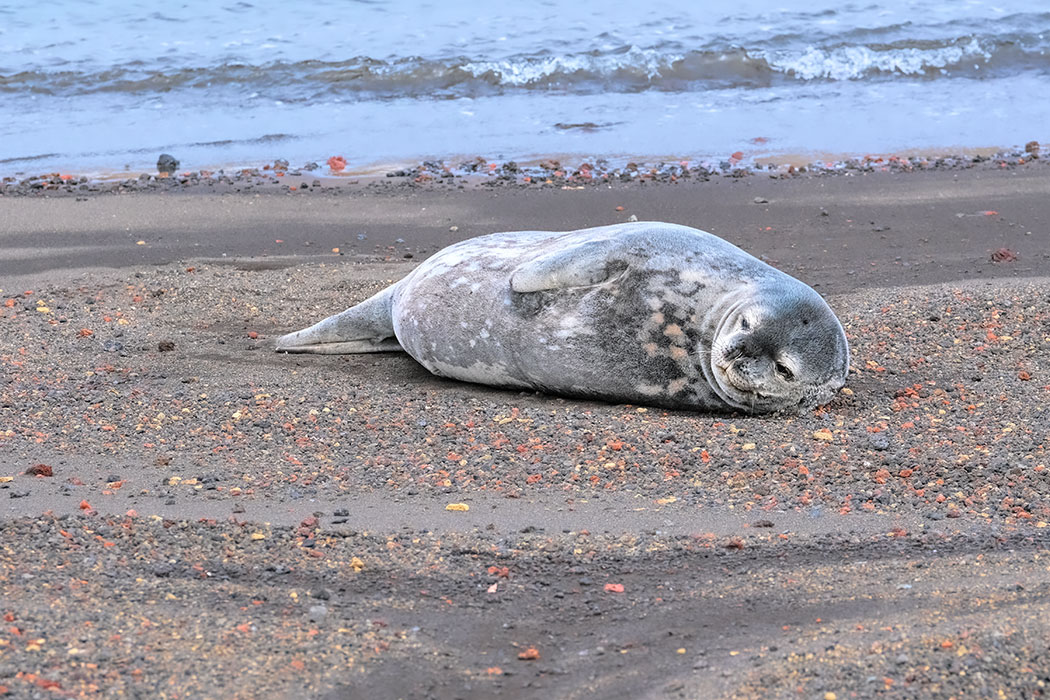Deception Island, the first expedition of my Antarctica cruise, lived up to its name in every way. From afar it looked like a solid chunk of barren rock, but when we circled around to the back side its high cliffs fell away to the sea. A narrow channel led through the break in the cliffs. Within was a flooded caldera – an interior lagoon that had formed when this shield volcano blew its top. The channel itself was deceptive. It looked wide enough, but our captain explained that an enormous submerged rock lay just eight feet below the surface in the middle of the channel. Not to be deterred, he deftly navigated into the caldera with just a few feet to spare. The interior of the caldera was quiet and peaceful, with barely a breeze. Yet we were floating atop an active volcano that had erupted as recently as 1970…and 1969…and 1967! Gulp.
Soon after anchoring we were on our way to the shore in our rubber Zodiac boats, eager to explore the ruins of an old whaling and fur sealing station. Ships began to congregate in this protected harbor during the 1819–20 summer season. It was the perfect base from which to hunt fur seals in Antarctica. By 1822, more than 100 ships were anchored in the sheltered lagoon, but seal hunting heydays did not last long. Within a few years fur seals were nearly extinct due to over-hunting. The sealing industry collapsed as quickly as it had begun.
Ironically, one of the first animals I encountered when I stepped ashore was this Weddell Seal. It is one of six species of seal that live in Antarctica, but it is without a doubt the cutest. With few natural predators other than whales, the population of seals in Antarctica has rebounded. Today, unafraid, they bask in the sun in the shadow of buildings where their ancestors were once slaughtered.


They are nice article. Really it was a wonderful! Keep enjoyed. still safe and well!
Enjoyed, still safe and well!
Good to hear that. Crazy times, for sure.